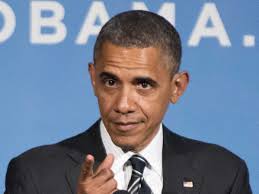(Reuters) – U.S. job growth slowed more than expected in July and an unexpected rise in the unemployment rate pointed to some slack in the labor market that could give the Federal Reserve room to keep interest rates low for a while.
Nonfarm payrolls increased 209,000 last month after surging by 298,000 in June, the Labor Department said on Friday.
Data for May and June were revised to show a total of 15,000 more jobs created than previously reported, showing underlying momentum.
July marked the sixth straight month that employment has expanded by more than 200,000 jobs, a stretch last seen in 1997. The one tenth of a percentage point increase in the unemployment rate to 6.2 percent came as more people entered the labor market, a sign of confidence in the job market.
Average hourly earnings, which are being closely monitored as a potential signal of reduced slack that could prompt the Fed to raise rates, rose only one cent.
That left the annual rate of increase at 2.0 percent, still well below the levels that would make Fed officials nervous.
Fed officials on Wednesday cautioned that “significant” slack remained, signaling patience on the rate front.
Economists polled by Reuters had expected payrolls to increase 233,000 last month and the unemployment rate to hold steady at 6.1 percent.
The cooling in hiring is unlikely to change perceptions about strong economic growth in the third quarter.
The economy grew at a 4.0 percent annual pace in the second quarter after shrinking at a 2.1 percent rate in the first three months of year. While restocking by businesses lifted the figure, growth is seen remaining sturdy for the rest of 2014.
The employment report, already closely watched by financial markets around the globe, is set to garner even more attention in the months ahead, as investors seek to gauge when the Fed is likely to raise benchmark interest rates from near zero, where they have been since December 2008.
Most economists look for the first increase in the second quarter of next year. [ECILT/US]
The jobless rate has declined from a peak of 10 percent in October 2009, but much of the drop has been because Americans have left the workforce.
The labor force participation rate, or the share of working-age Americans who are employed or at least looking for a job, increased to 62.9 percent in July after holding at 62.8 percent for three consecutive months.
A broad measure of unemployment that includes people who want a job but have given up searching and those working part-time because they cannot find full-time jobs edged up to 12.2 percent after hitting its lowest level since October 2008 in June.
Job gains were broad-based in July. Services industries employment accounted for the bulk of the gains, adding 140,000 positions. That compared to 232,000 jobs in June.
Manufacturing payrolls increased for the 12th month in a row, adding 28,000 jobs in July. Construction jobs advanced for the seventh consecutive month, with July payrolls rising 22,000. Government employment increased by 11,000 jobs.
The length of the average workweek held steady at 34.5 hours.













